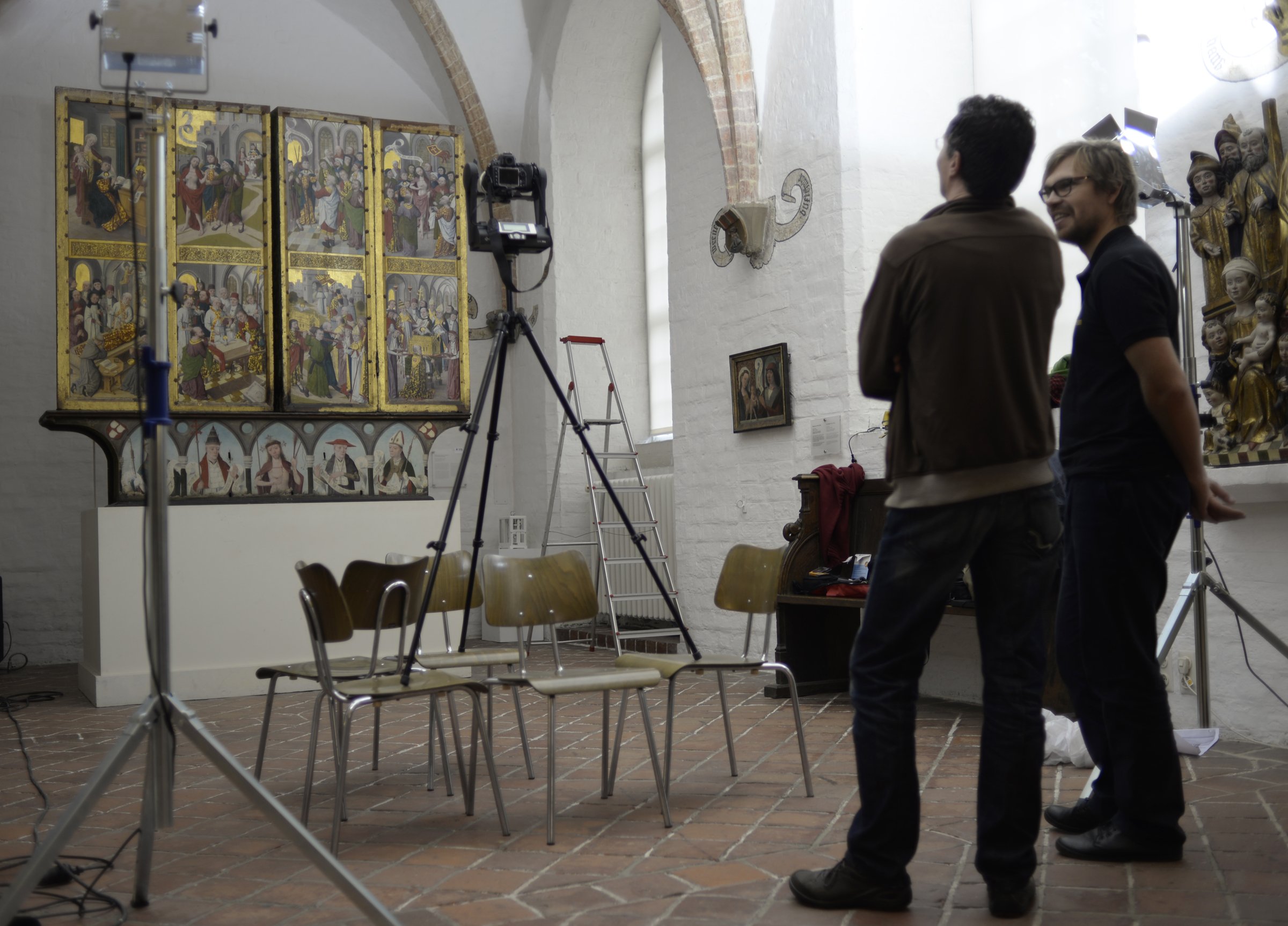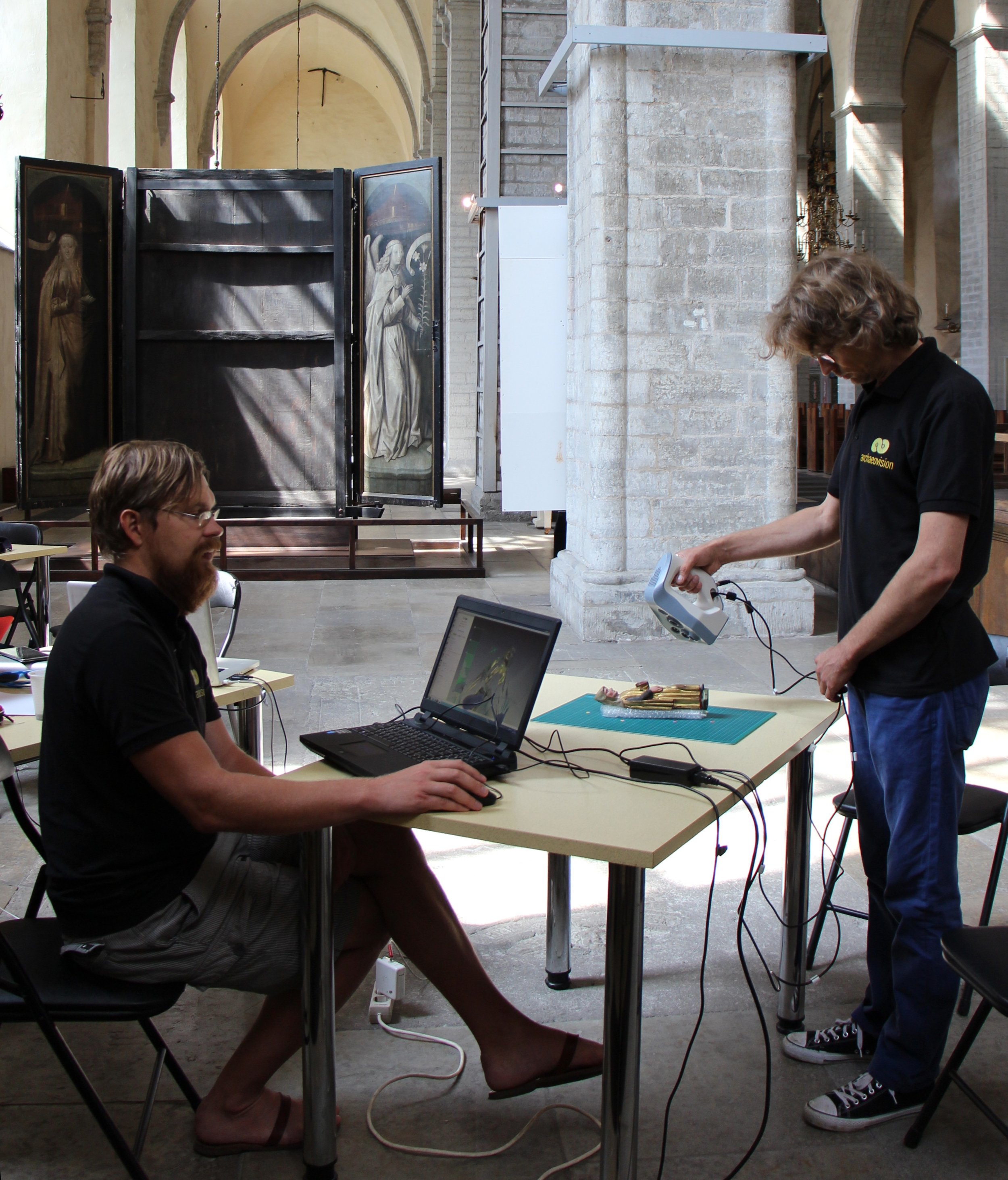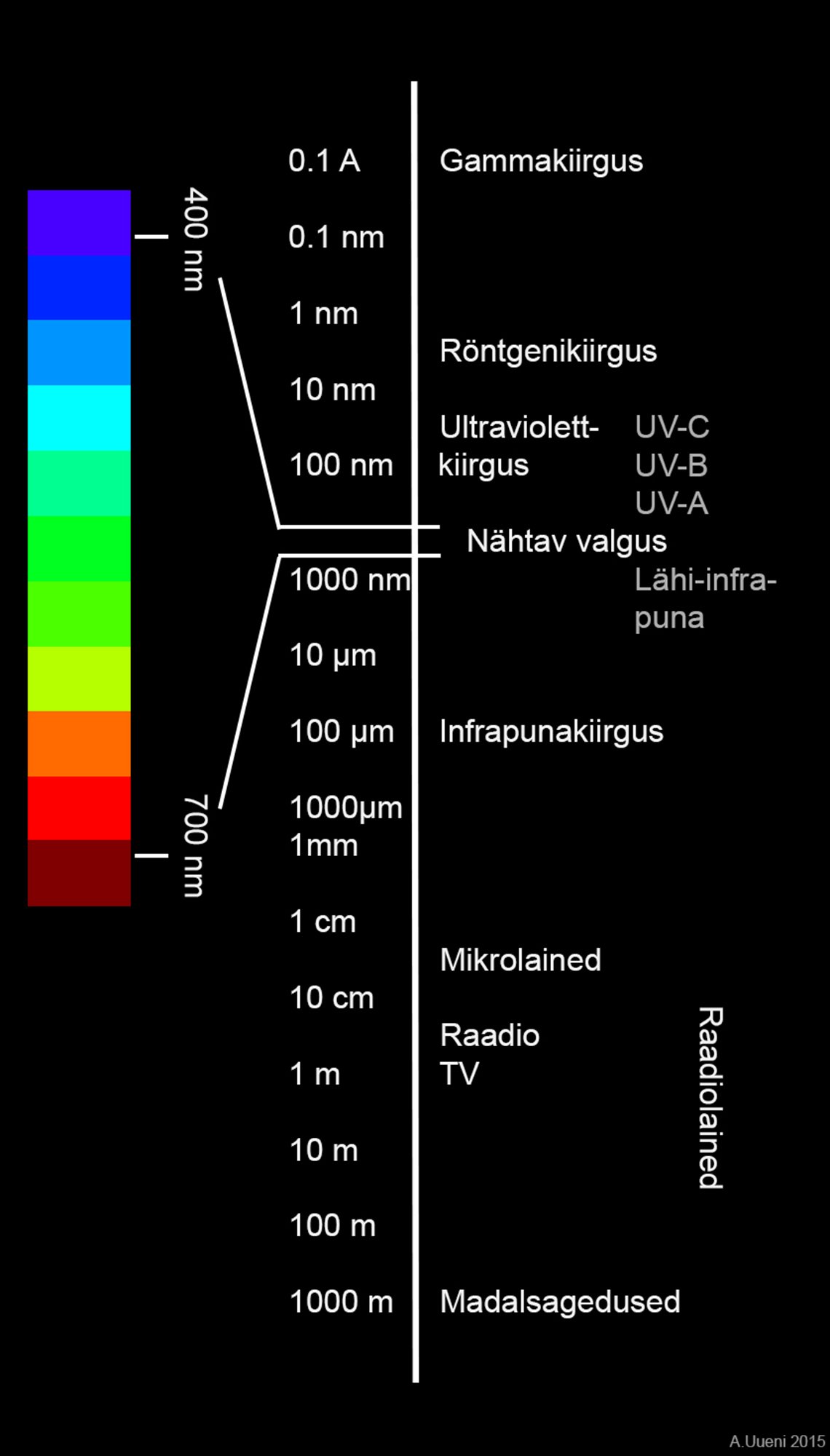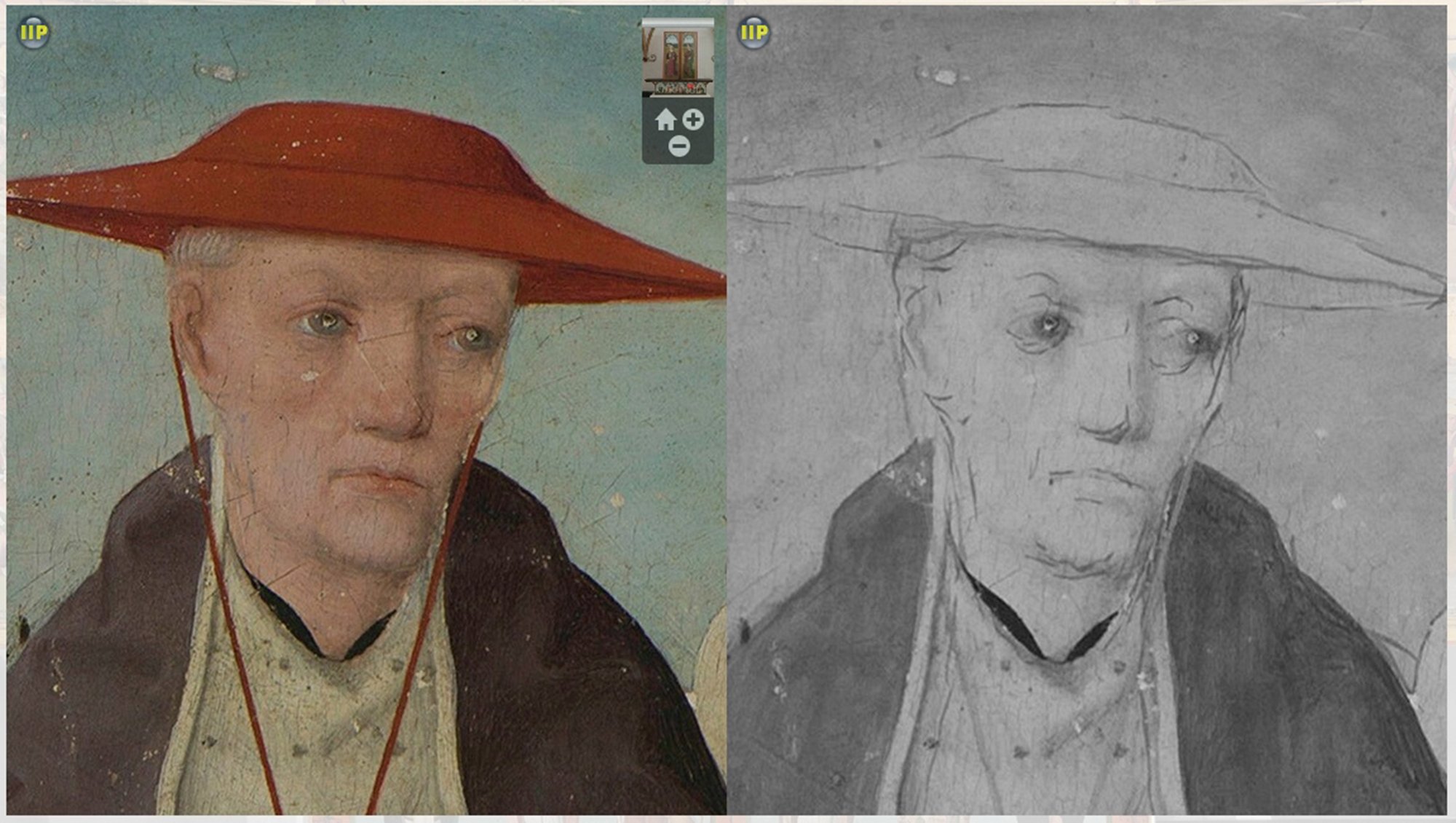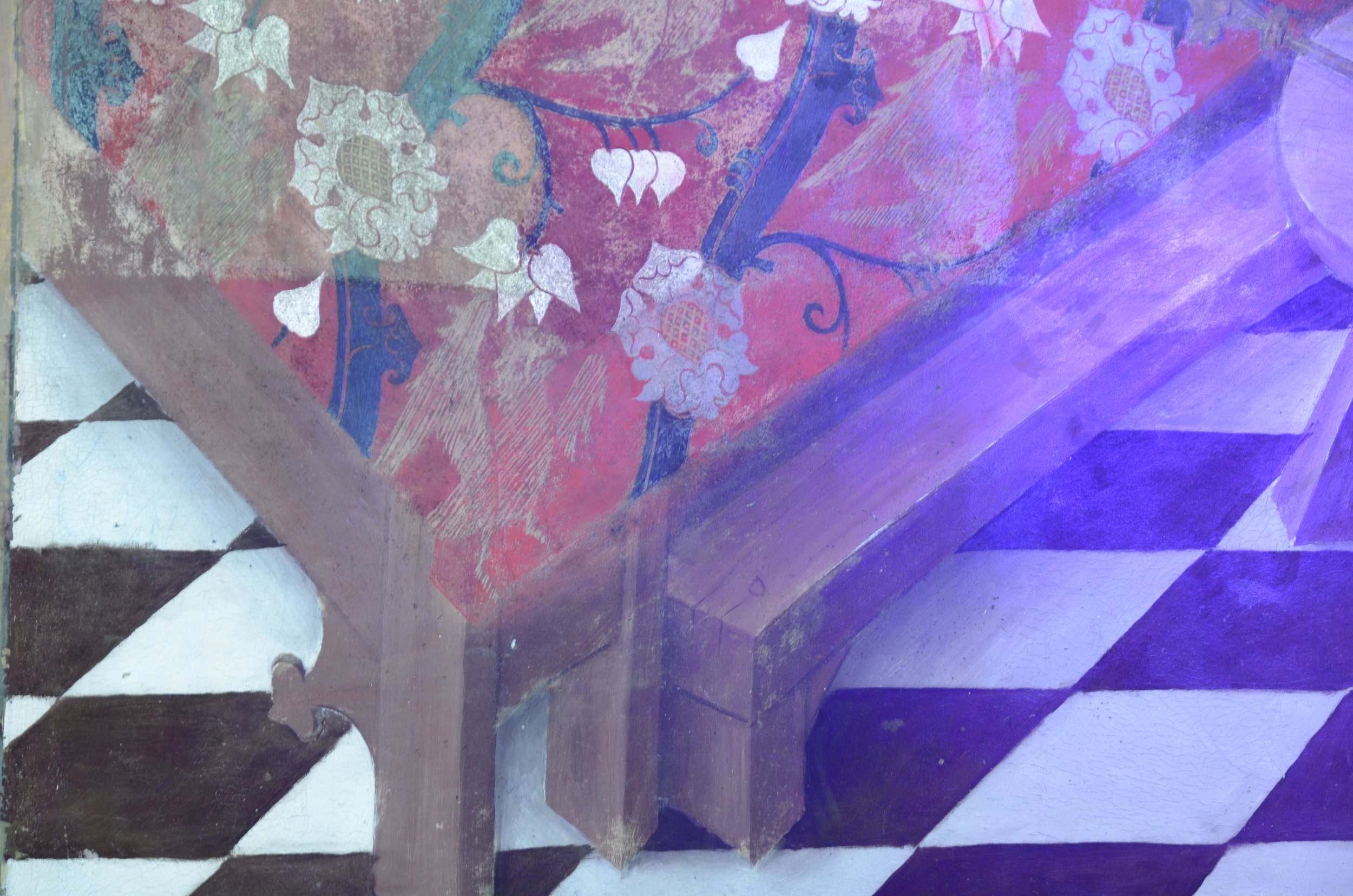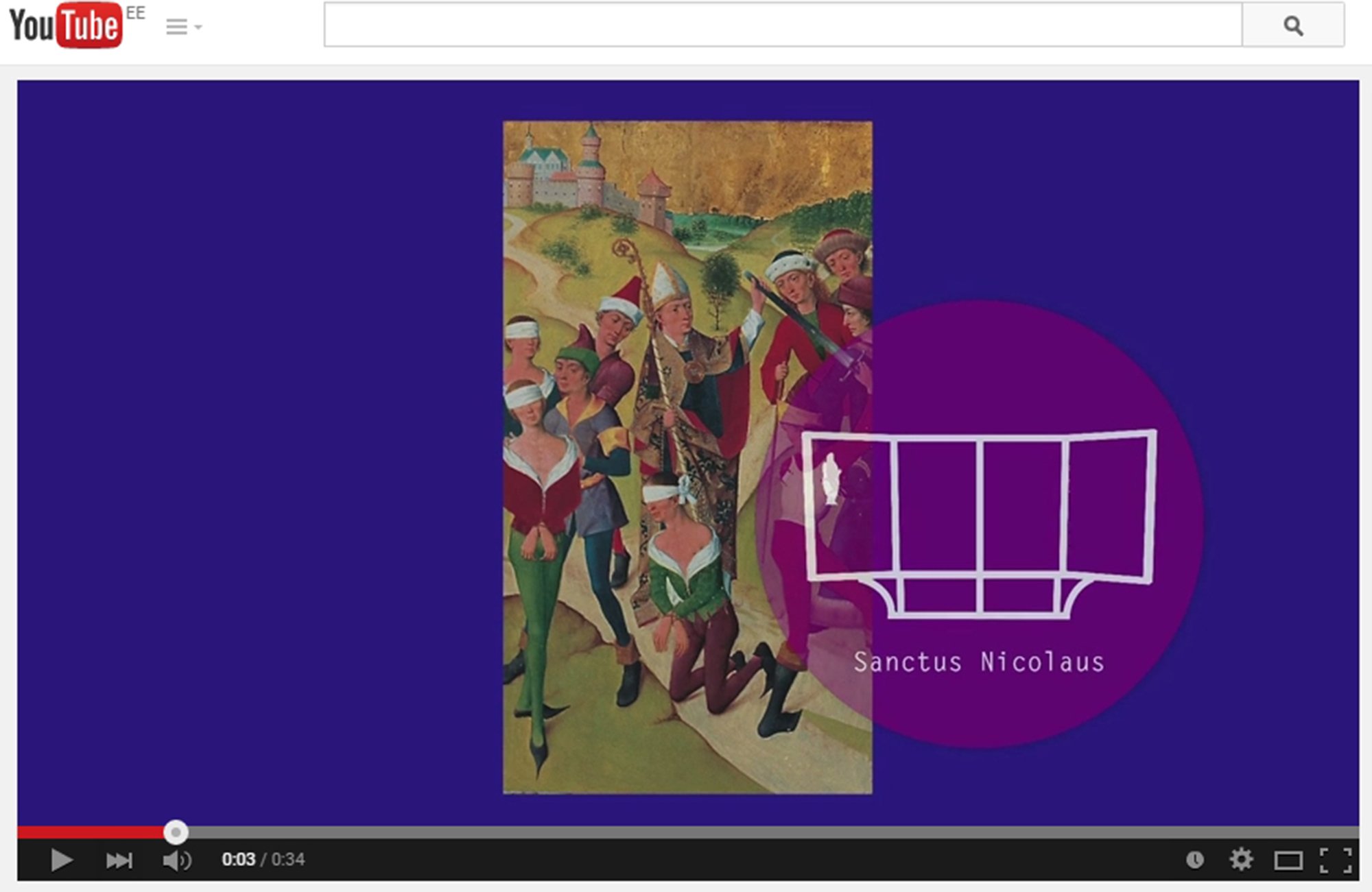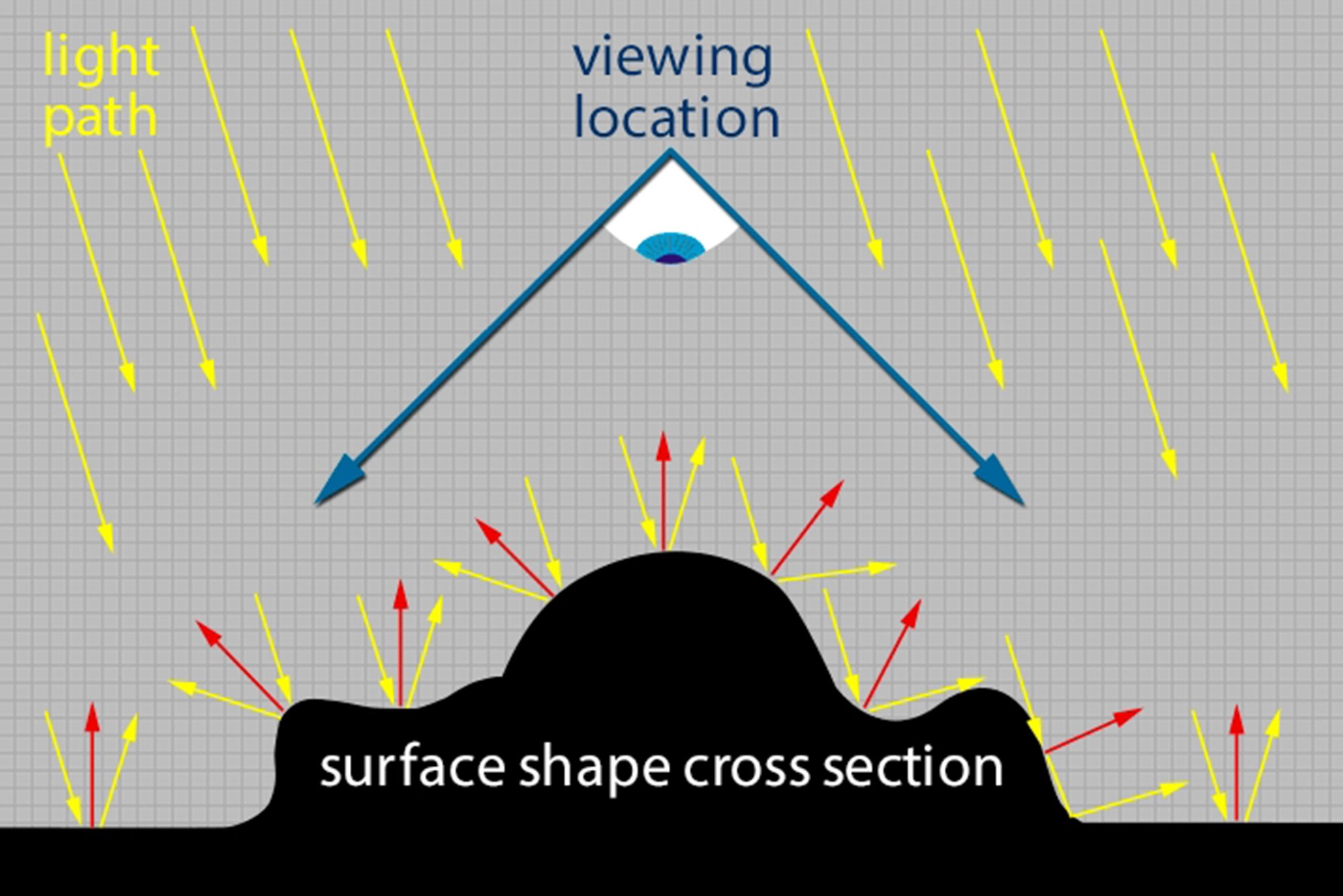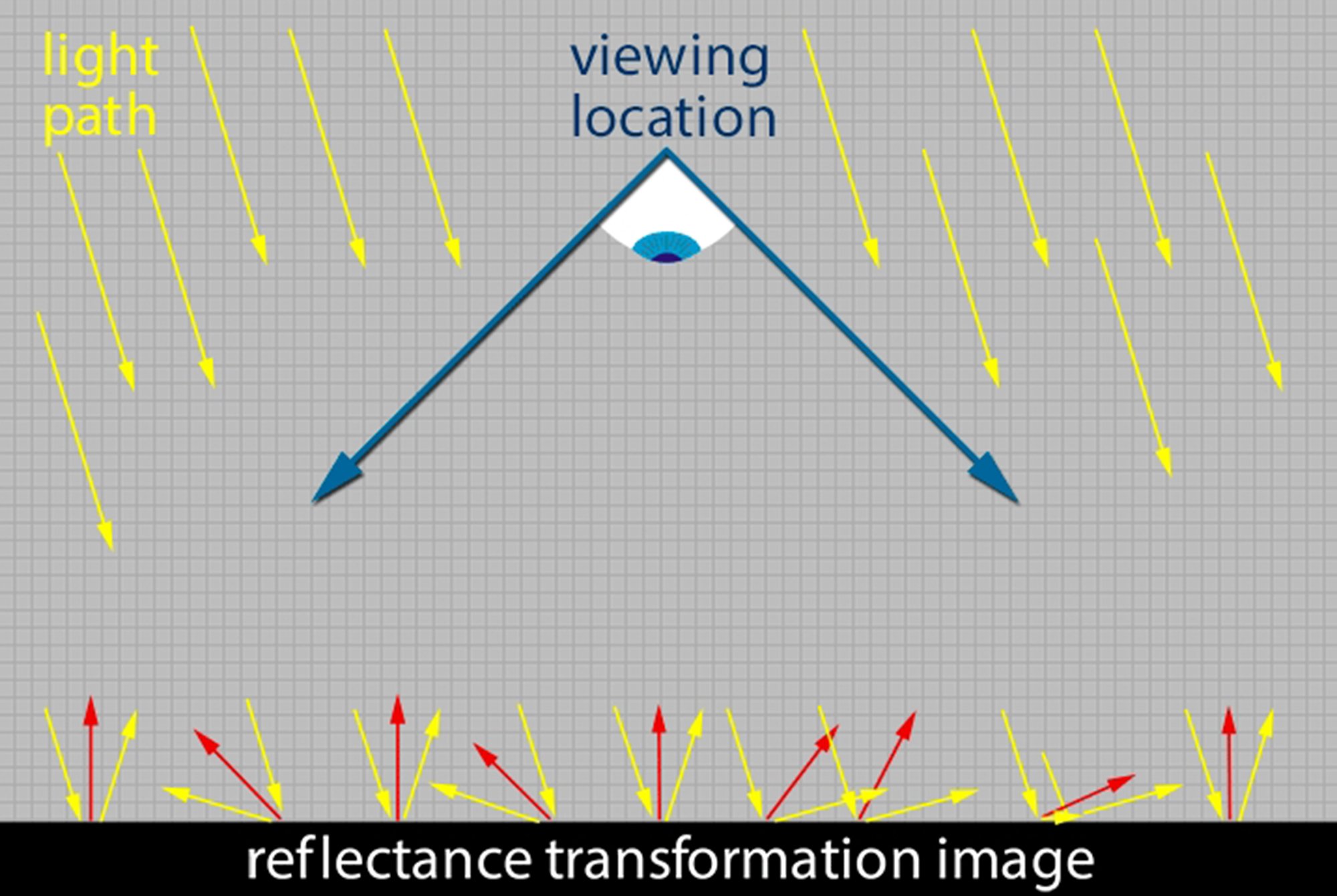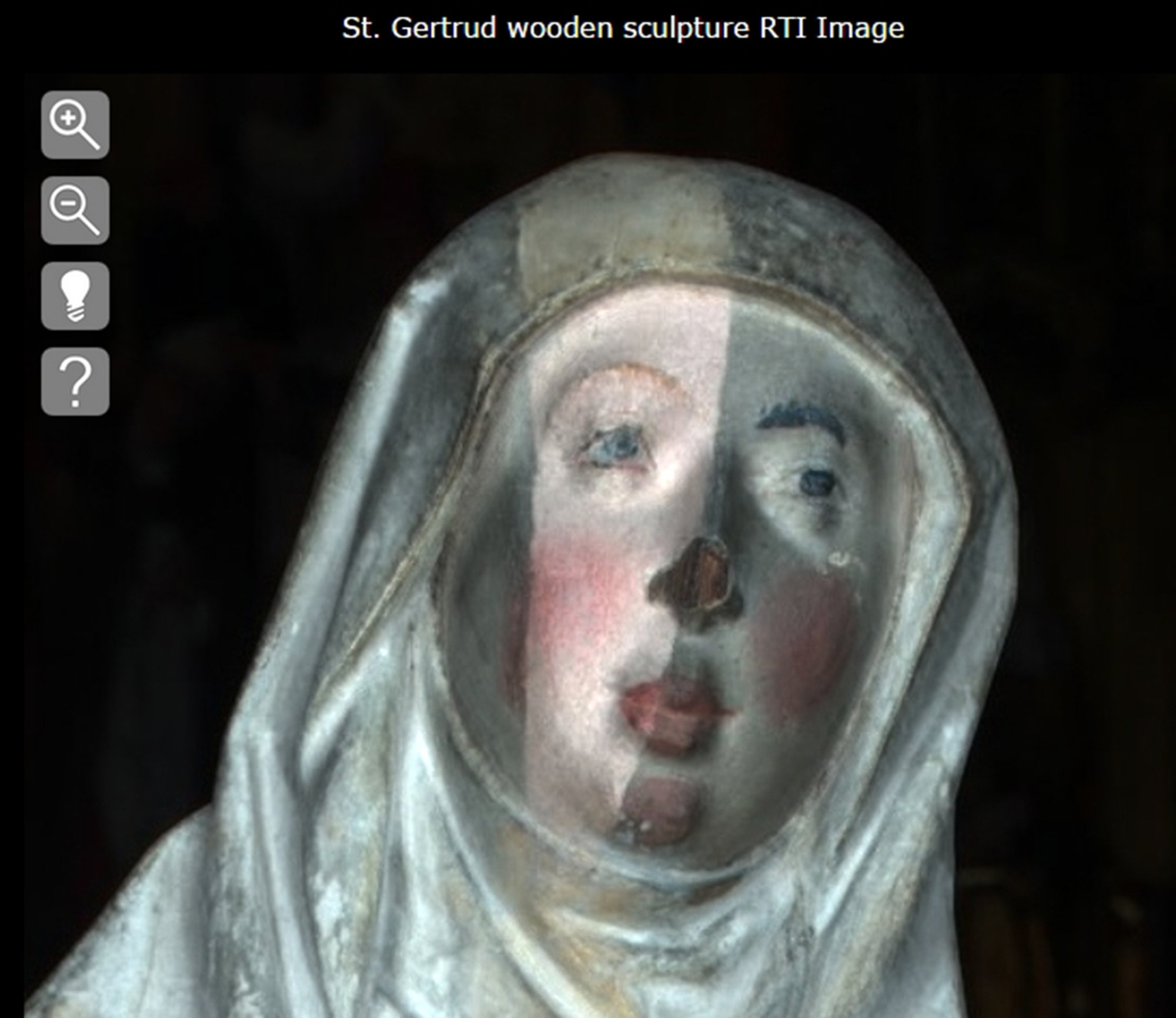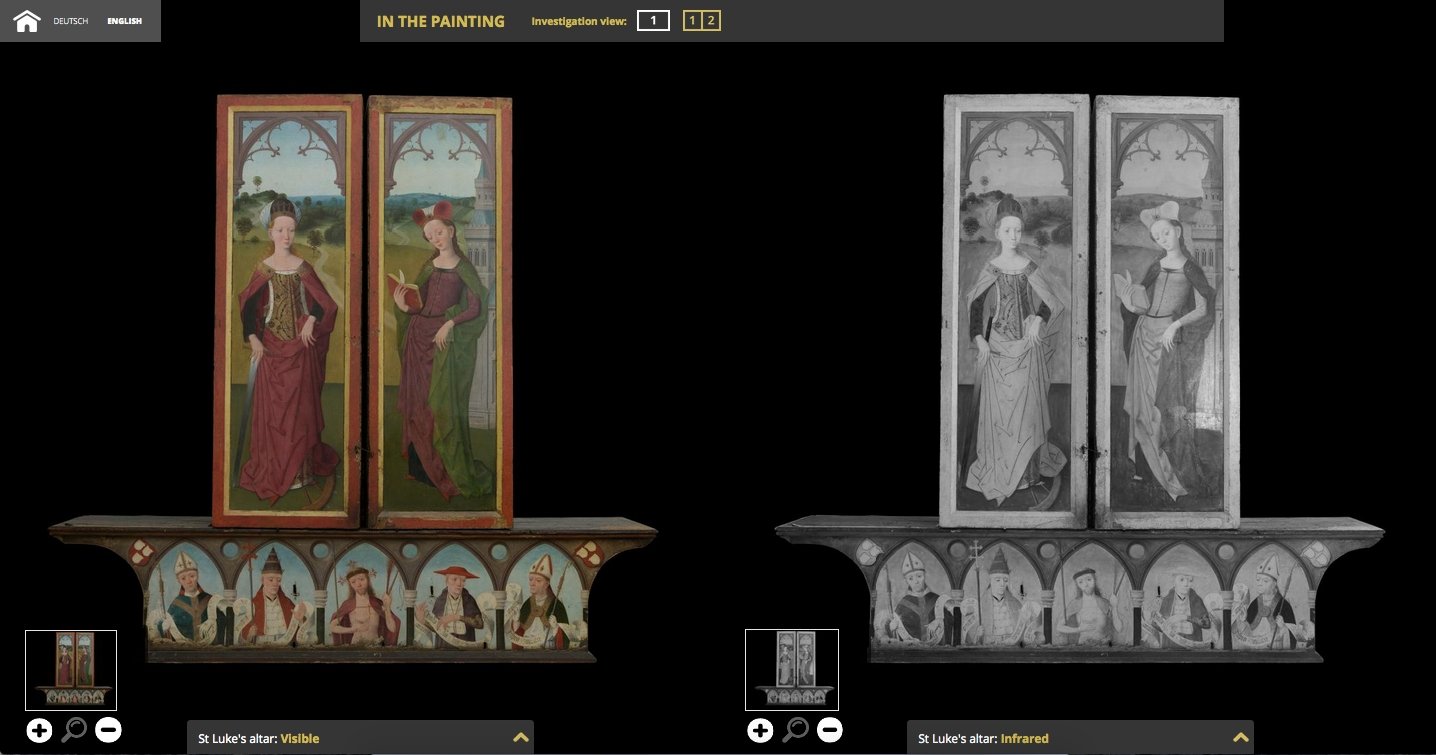VARIOUS TECHNICAL METHODS FOR STUDYING THE CULTURAL HERITAGE BASED ON THE HIGH ALTAR OF ST NICHOLAS’ CHURCH
Autor:
Andres Uueni, Hembo Pagi, Hilkka Hiiop
Year:
Anno 2015
Category:
Research
Rode Altarpiece in Close-up, a project launched by the Estonian Art Museum, has given the Archaeovision R&D an extensive opportunity to test and apply various methods in photography, imaging and IT with an aim to use them in our museums and cultural heritage field for better documentation of the latter.
DOCUMENTATION OF THE HIGH ALTAR IN ST NICHOLAS’ CHURCH
When documenting a cultural heritage object and seeking for the optimal method, one has to consider the characteristics of the object first and foremost, keep in mind the purpose and ensure that the results could be observed and achieved again.
The double-winged high altar obviously made in Hermen Rode’s workshop is one of the largest and best-preserved late-medieval North German altar retables in Europe. When open it is over 6 m wide and almost 3.5 m high. Over forty saints and biblical characters have been depicted on it. Being a combination of plane and three-dimensional art this large-scale altar offers excellent opportunities for research and testing. When its two pairs of wings are open or closed it can be displayed in different positions and thus it offers far-ranging opportunities for analysing the results of obtaining information, mapping and documenting a complicated object.
The present project included various methods for documentation, such as photogrammetry, 3D and laser scanning and multispectral imaging (near infrared, ultraviolet, X-ray) and reflectance transformation imaging (RTI). We used the same methods when we studied and documented St Luke’s altar in St Ann’s Church in Lübeck, Germany.
3D DOCUMENTATION OF A CULTURAL HERITAGE OBJECT
For the current project we used the photogrammetric method for obtaining 3D data. Several algorithms were used for creating three-dimensional data of the systemically taken photos. The results allow determine the measurements, shape and position – the co-ordinates of the object. This makes it possible to map the information on the altar precisely, i.e. the earlier investigations, results of the instrumental analysis, base drawings, over-painting, dendrochronology etc. Time factor can be added after repeated measuring and recording the possible changes in time and environment.
MULTISPECTRAL IMAGING, MSI
Modern specially adapted digital single-lens reflex camera with sensors on 230-1040 wavelengths and added optical filters allow gaining information in ultraviolet (UV) and infrared light spectra.
Near infrared photography (720-1060 nm) enables to record carbon-containing basic drawing under the layer of paint. These drawings may have been made in different techniques – in pencil, charcoal or ink. Displaying ultraviolet fluorescence (360-400 nm) enables to obtain information about changes in the later paint layers and their consistence. This way it is possible to see what restorations and repairs have been carried out and whether the authorship has changed. Investigating the varnishes and the pigments of paints the UV-display can be used to ascertain the differences in the surface. So, for example, varnishes fluoresce in a different way according to their age and structure – aged natural resin-containing varnishes seem greenish yellow, whereas newer synthetic varnishes may appear from milk-white to violet.
X-rays penetrate the parts of the altar one is interested in and the wooden figures, providing additional information about methods used in H. Rode’s workshop.
RTI PHOTOGRAPHY
RTI – Reflectance Transformation Imaging – is a method of serial photographing that uses a sidelight to bring forth the changes in the surface of the object. The method is applied when coins, sculptures, knitwear, or old plaques are investigated or displayed. In the project Rode Altarpiece in Close-up we used the RTI method for documentation of wooden sculptures and investigation of ornaments on painted surfaces.
VISUALISATION OF THE DATA
The current project resulted in a great amount of files in different formats. These were tables and graphs of quantitative data, video-files and photos taken in different ways, among them ultraviolet and near infrared in various light regimes. We offered iconographical and pictorial results and described in numbers and texts the off-come of our studies of microscopic pigments and binders. Our aim was to create standard solutions in the web that assembles the copious and variegated information about conservation and research.
The results can be seen in St Nicholas Church blog and the data is available at http://nigulistemuuseum.ekm.ee, http://rode.ekm.ee.
REFERENCES:
Robert Carroll, Ravi Ramamoorthi, Maneesh Agrawala, Illumination Decomposition for Material Recoloring with Consistent Interreflections, 2011
http://graphics.berkeley.edu/papers/Carroll-IDM-2011-08/Carroll-IDM-2011...
Ying Wang, Sheping Zhai, Zhongmin Wang, Multispectral Image Reproduction via Color Appearance Mapping. – International Journal of Signal Processing, Image Processing and Pattern Recognition Vol.7, No.4 (2014), pp.65-72, http://dx.doi.org/10.14257/ijsip.2014.7.4.06
Laser scanning, http://en.wikipedia.org/wiki/Laser_scanning/
Photogrammetry, http://en.wikipedia.org/wiki/Photogrammetry/
Andres Uueni, Kultuuripärandi 3D dokumenteerimine, 2012, http://www.kanut.ee/Renovatum/Anno_2012/pdf/renovatum_2012_a.pdf
Franz Mairinger. UV-, IR- and X-ray imaging. Non-destructive microanalysis of cultural heritage materials, Elsevier, 2004, http://goo.gl/avbZ8c
Joanne Dyer, Giovanni Verri, John Cupitt. Multispectral Imaging in Reflectance and Photo-induced Luminescence modes: A User Manual, 2013, https://www.britishmuseum.org/pdf/charisma-multispectral-imaging-manual-...
Warda, J., Frey, F., Heller, D., Kushel, D., Vitale, T., Weaver, G. The AIC Guide to Digital Photography and Conservation Documentation, 2nd Edition. 2011.
Malzbender, Tom, Dan Gelb, and Hans Wolters. "Polynomial texture maps." – Proceedings of the 28th annual conference on Computer graphics and interactive techniques. ACM, 2001.

